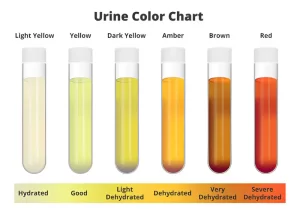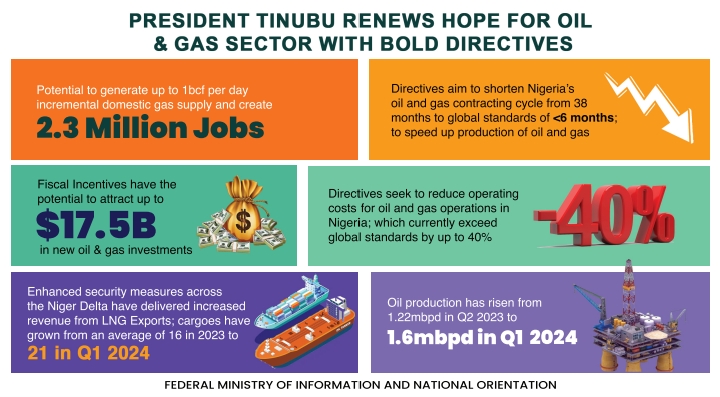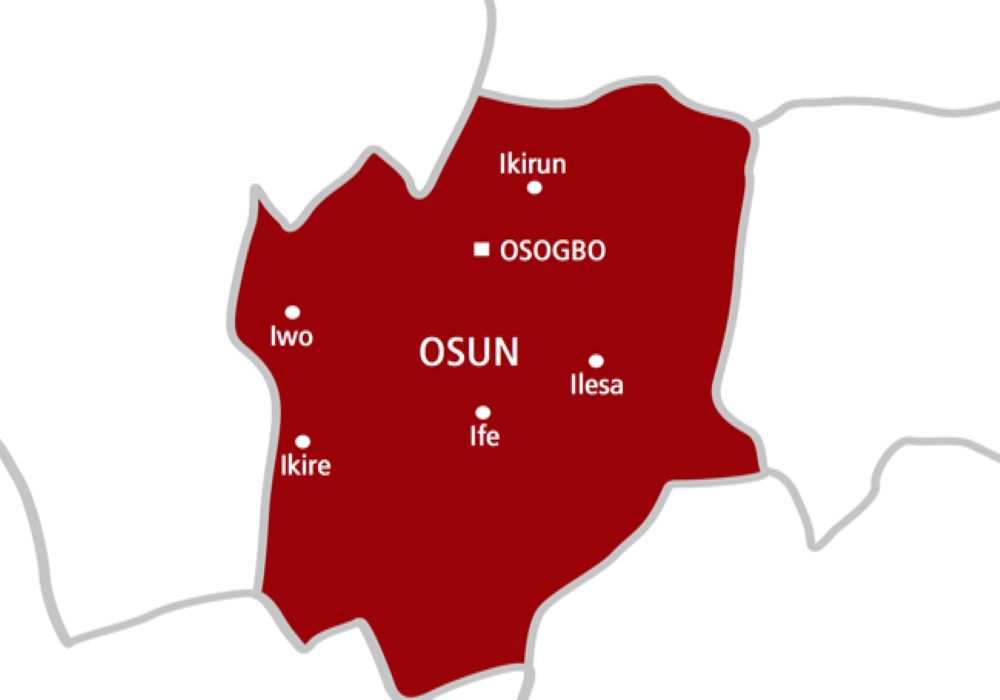Health
NCDC Clears Air On ‘New COVID-19 Variants Detected In Nigeria’

The Nigeria Centre for Disease Control and Prevention, NCDC, has said that the COVID-19 Omicron sub-lineages partly responsible for the current increase in COVID-19 cases in China, the United States, and the United Kingdom have not yet been detected in the country.
The NCDC disclosed this on Wednesday in an update on COVID-19 genomic surveillance signed by its Director General, Dr Ifedayo Adetifa.
The update which was made available to our correspondent showed that the Omicron sub-lineage responsible for the rise in cases in the US and UK is XBB.1.5 while BF.7 is responsible for the increased cases in China.
Adetifa, however, said B.5.2.1 has been seen in Nigeria since July 2022.
According to him, country-targeted travel restrictions including requests for PCR-negative tests from incoming travellers had little or no effect on preventing global and national circulation of omicron since the emergence of the variant and its relatives with their shorter incubation period.
He said, “The NCDC-led COVID-19 Emergency Operations Centre is monitoring COVID-19 trends in China, the United States of America, the United Kingdom, South Africa, India, and other countries with a high volume of traffic to and from Nigeria. This includes the resurgence of COVID-19 in China following the relaxation of the country’s zero-COVID policy, as well as significantly increased COVID-19 cases, admissions, and deaths in the UK and the USA over the past weeks driven in part by the usual winter exacerbations of respiratory illnesses.
“Before the recent case increase in China, the USA, the UK, and other countries, genomic surveillance has shown that the Omicron SARS-CoV-2 variant and its lineages continue to dominate in recorded infections worldwide. However, the rise in the new Omicron sub-lineages XBB.1.5 in the UK and the US, and BF.7 in China raises concern as it may spread faster than older Omicron sub-lineages (e.g., XBB or BQ) and that they are responsible in part for current increases in cases, hospitalisations, and deaths. However, the sub-lineage seen with cases in China, B.5.2.1, and BF.7 are responsible for the surge in China and do not appear to be increasing unusually in other countries.
“The NCDC continues to strengthen genomic surveillance of the COVID-19 virus in Nigeria. Since the detection of the Omicron variant in December 2021, its sub-lineage (BQ.1/BQ.1.1) has been dominant in Nigeria. None of these dominant sub-lineages in Nigeria that are also circulating elsewhere has been associated with any increases in case numbers, admissions, or deaths locally.
“The sub-lineages partly responsible for the current increase in COVID-19 cases in other countries i.e., XBB.1.5 and BF.7 have not yet been detected in the country but B.5.2.1 has been seen here since July 2022 and the others are most likely here already. BF.7 and XBB have also been circulating in South Africa since October 2022 but without any accompanying increase in cases, severe illness, or deaths.
“Regardless of COVID-19 variants in different parts of the world, severe disease, admissions, and deaths disproportionately affect the unvaccinated and those with established risk factors i.e., older people, people with co-morbidities, and the immunocompromised. The most important action for Nigerians to take is to get vaccinated against COVID-19 as the vaccine is the most important intervention for preventing severe disease, hospitalisation, and death.
“Though the COVID-19 protocols and restrictions have been eased, people at high risk for severe COVID-19 are advised to continue to adhere to the recommended non-pharmaceutical interventions such as the use of face masks, good hand and respiratory hygiene and avoidance of crowded spaces.
“COVID-19 has and continues to follow a different epidemiological course in Nigeria and most of Africa. Other Omicron sub-lineages that were associated with increases in cases, admissions and deaths elsewhere did not cause the same in Nigeria as confirmed by our genomics surveillance. This is because the population is significantly protected from a combination of natural immunity and vaccination with vaccines with a high impact on hospitalisation, and deaths. In hindsight, country-targeted travel restrictions including requests for PCR-negative tests from incoming travellers had little or no effect on preventing global and national circulation of omicron since the emergence of this variant and its relatives with their shorter incubation period.
“The NCDC will continue to pay close attention to the ongoing COVID-19 situation in other countries and gather additional surveillance data to inform actions. We are reviewing the situation again this week. At this next review and if deemed necessary, a range of actions, not limited to enhanced surveillance of travellers at airports, may be decided on and implemented.”
Health
Cholera Outbreak In Sokoto Claims 25 Lives, Over 1,000 Infected
A cholera outbreak in Sokoto State has claimed the lives of at least 25 people, with 1,160 confirmed cases recorded in three local government areas.
The state Commissioner for Health, Dr. Asabe Balarabe, disclosed this during a press briefing on Monday.
She revealed that 15 patients are currently receiving treatment for the disease, which was confirmed through laboratory tests.
READ MORE: Tinubu Joins World Leaders In Renewed Fight Against Hunger, poverty
“Out of 1,160 people affected by the outbreak, 25 have succumbed to the disease,” Dr. Balarabe said.
In response, the state government has ramped up efforts to curtail the spread of the infection, which is caused by consuming contaminated water or food.
“The state rescue teams are collaborating with the government to manage and forestall further spread of the dreaded disease,” the commissioner stated.
To address the crisis, the government has ordered the immediate purchase and distribution of essential drugs free of charge to all 18 local government areas of the state.
Dr. Balarabe urged residents to maintain proper hygiene and seek medical attention immediately if they exhibit symptoms such as diarrhea and vomiting.
The outbreak has highlighted the need for improved sanitation and clean water access in affected communities, as health authorities work to contain the spread and prevent further fatalities.
Health
Don’t Ignore These Hidden Health Clues In Your Urine
Your body has subtle ways of communicating essential information about your health—and sometimes, one of the simplest clues is the color of your urine.
Urine, which is about 95% water, forms when your kidneys filter out waste and excess water from your blood. Normally ranging from light yellow to amber, it provides insights into your hydration and more.
Changes in urine color, smell, or frequency can serve as early indicators of potential health conditions.
While most color shifts are harmless and temporary, persistent changes could suggest a more significant issue.
“Tracking these signs can be a simple way to monitor hydration and potentially catch health issues early,” says Dr. Jenna Lewis, a nephrologist at Healthline Clinic.
Here’s a guide to what different urine colors might mean for your health:
Clear or Very Light Yellow
This typically shows you’re well-hydrated. While generally a positive sign, consistently clear urine could indicate overhydration, which may lower salt levels in your body.
Light to Medium Yellow
Often considered the “healthy” zone, this shade reflects good hydration without excess water intake.
Dark Yellow to Amber
A darker shade often indicates a need for more water. This is common in the morning or after exercise and can usually be resolved by drinking more fluids.
Orange
Dehydration may lead to orange urine, but other factors can also contribute. High levels of beta-carotene (found in foods like carrots) or certain medications can turn urine orange.
Persistent orange urine might signal liver or bile duct issues, so consult a doctor if it persists.
Pink or Red
While foods like beets or berries can cause pinkish urine, this color can also indicate the presence of blood, possibly signaling kidney problems, infections, or kidney stones. If diet isn’t the cause, seek medical advice.
Brown or Cola-Colored
This shade may suggest dehydration or, in some cases, a more severe issue. Brown urine can indicate liver or kidney problems, or a condition called rhabdomyolysis, where muscle tissue breaks down. Persistent brown urine warrants a visit to the doctor.
Blue or Green
Rarely, certain medications, dyes, or health conditions can produce blue or green urine. While often harmless, persistent blue or green urine should be evaluated by a healthcare provider.
Cloudy or Milky
Cloudy urine may indicate an infection or excess minerals. It could be a sign of a urinary tract infection, kidney stones, or mild dehydration. Sometimes, excess proteins or fats may also cause this cloudiness.
Most changes in urine color are temporary, especially when related to hydration, diet, or harmless compounds. However, experts agree that if unusual colors or symptoms persist, a consultation with a healthcare provider is wise.
“Listening to your body’s signals, even through something as simple as urine color, can offer valuable insights into your overall health,” adds Dr. Lewis.
By keeping an eye on these colors, you can stay on top of hydration and potentially catch health issues early.
Health
JUST IN: JOHESU Launches Nationwide Strike Over Unresolved Demands
Members of the Joint Health Sector Unions and Assembly of Health Care Professionals (JOHESU) have announced a seven-day warning strike set to begin at midnight on Friday.
This action follows a 15-day notice of industrial action issued to the Federal Government.
READ MORE:Russia Battles Inflation, Raises Key Interest Rate To 21%
Addressing journalists in Abuja, JOHESU’s national chairman, Kabiru Minjibir, outlined the union’s primary demands, emphasizing a need for immediate action to address ongoing concerns affecting healthcare workers across the nation.
Key demands include the urgent implementation of the consolidated health salary structure and the payment of a 25 percent review of arrears from June to December 2023.
The union is also calling for an upward review of the retirement age for healthcare workers, a tax waiver on healthcare workers’ allowances, and the immediate disbursement of COVID-19 inducement hazard allowances.
Minjibir urged all union members nationwide to adhere to the strike directive, underscoring that compliance would be essential in pushing for their demands.
Details shortly………….














